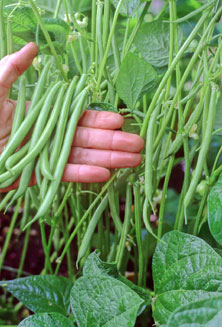Tips for growing green beans |
||||||||||||||||||||||||||||||||||||||||||||||||||||||||||||||||||||||||||||||||||||||||||||||||||||||||||||||||||||||||||||||||||||||||||||||||||||||||||||||||||||||||||||||||||||||||||||||||||||||||||||||||||||||||||||||||||||||||||||||||||||||||||||||||||||||||||||||||||||||||||||||||||||||||||||||||||||||||||||||||||||||||||||||||||||||||||||||||||||||||||||||||||||||||||||||||||||||||||||||||||||||||||||||||||||||||||||||||||||||||||||||||||||||||||||||||||||||||||||||||||||||||||||||||||||||||||||||||||||||||||||||||||||||||||||||||||||||||||||||||||||||||||||||||||||||||||||||||||||||||||||||||||||||||||||||||||||||||||||||||||||||||||||||||||||||||||||||||||||||||||||||||||||||||||||||||||||||||||||||||||||||||||||||||||||||||||||||||||||||||||||||||||||||||||||||||||||||||||||||||||||||||||||||||||||||||||||||||||||||||||||||||||||||||||||||||||||||||||||||||||||||||||||||||||||||||||||||||||||||||||||||||||||||||||||||||||||||||||||||||||||||||||||||||||||||||||||||||||||||
|
|
||||||||||||||||||||||||||||||||||||||||||||||||||||||||||||||||||||||||||||||||||||||||||||||||||||||||||||||||||||||||||||||||||||||||||||||||||||||||||||||||||||||||||||||||||||||||||||||||||||||||||||||||||||||||||||||||||||||||||||||||||||||||||||||||||||||||||||||||||||||||||||||||||||||||||||||||||||||||||||||||||||||||||||||||||||||||||||||||||||||||||||||||||||||||||||||||||||||||||||||||||||||||||||||||||||||||||||||||||||||||||||||||||||||||||||||||||||||||||||||||||||||||||||||||||||||||||||||||||||||||||||||||||||||||||||||||||||||||||||||||||||||||||||||||||||||||||||||||||||||||||||||||||||||||||||||||||||||||||||||||||||||||||||||||||||||||||||||||||||||||||||||||||||||||||||||||||||||||||||||||||||||||||||||||||||||||||||||||||||||||||||||||||||||||||||||||||||||||||||||||||||||||||||||||||||||||||||||||||||||||||||||||||||||||||||||||||||||||||||||||||||||||||||||||||||||||||||||||||||||||||||||||||||||||||||||||||||||||||||||||||||||||||||||||||||||||||||||||||||||
| Growing
Green Beans Green
bean seeds like warm soil and a full sun location. Don't plant any seeds until
all danger of frost has passed and the soil temperature remains above 65 degrees.
Some garden experts say you'll get the best results and overall healthier plants
if you wait until the soil is at least 70°F. Here is a
great tutorial on how
to test soil Ph from wikiHOW. Today
it's easy to find fungicide treated seeds. The fungicide helps to prevent certain
plant diseases from occurring. You can also choose beans varieties that are resistant
to disease such as rust, powdery mildew, bean mosaic and curly top. This is not
a guarantee you won't develop problems in the garden, but it's an extra measure
of help against them. Place green bean seeds
to a 1 inch depth. Cover the seed with dirt to fill the furrow . Plant the seeds
1-2 inches apart in rows that are 2 to 2 1/2 feet apart. Water well. When the
bean plants reach 3 inches height, thin them to 3 to 4 inches apart. Planting Pole Green Beans When
planting pole beans you will want to plant them on hills or mounds. These mounds
should be 3 feet apart with rows 3-4 feet wide. Place
a stake in the center of the mound and place 3 or 4 bean seeds around the pole
one inch deep in the soil. Water well and keep the seeds moist. You should see
the seeds start to sprout within 7 days. Fertilizing
Green Beans You'll need to continue to fertilize the beans during their growing season. Follow the manufacturers instructions. Scatter 1/2 cup of fertilizer over each 10 foot row of beans. Water the fertilizer well into the soil. Watering Green Beans One inch of water a week is the general rule, whether it comes via rain or the hose. Water the plants during spells of dry weather. Water them directly at their roots, trying to keep the plant as dry as possible. It's best to water in the morning so that the plant leaves can dry out. This helps prevent diseases like leaf mold. Do not let the soil dry out. Keep it uniformly moist at all times. This can help prevent blossom drop. Preventing
Blossom Drop Handle
the plant itself with care when harvesting the beans Don't tug or yank on the
plant. Treat the plants gently and they'll continue to produce. Use one hand to
hold the stem and one hand to pluck the bean. Harvest the beans when the plant
is dry. Successful
Garden Planning In
order to help ensure your success if the soil is very dry in July-August plant
the seeds at a depth of 1 1/2 inches to help them maintain adequate moisture.
Green
Bean Garden Tips Green Bean Garden Pests The
Mexican bean beetle is an enemy of your green bean garden as are aphids and leafhoppers.
Holes in the leaves are an indicator of beetles or caterpillars. Manually remove
any beetles you find and check the undersides of the leaves. If you see eggs remove
the leaf. It's
always best to check with your local agriculture service agent for advice if you
have any questions related to particular garden pests or pest control for your
area. |
||||||||||||||||||||||||||||||||||||||||||||||||||||||||||||||||||||||||||||||||||||||||||||||||||||||||||||||||||||||||||||||||||||||||||||||||||||||||||||||||||||||||||||||||||||||||||||||||||||||||||||||||||||||||||||||||||||||||||||||||||||||||||||||||||||||||||||||||||||||||||||||||||||||||||||||||||||||||||||||||||||||||||||||||||||||||||||||||||||||||||||||||||||||||||||||||||||||||||||||||||||||||||||||||||||||||||||||||||||||||||||||||||||||||||||||||||||||||||||||||||||||||||||||||||||||||||||||||||||||||||||||||||||||||||||||||||||||||||||||||||||||||||||||||||||||||||||||||||||||||||||||||||||||||||||||||||||||||||||||||||||||||||||||||||||||||||||||||||||||||||||||||||||||||||||||||||||||||||||||||||||||||||||||||||||||||||||||||||||||||||||||||||||||||||||||||||||||||||||||||||||||||||||||||||||||||||||||||||||||||||||||||||||||||||||||||||||||||||||||||||||||||||||||||||||||||||||||||||||||||||||||||||||||||||||||||||||||||||||||||||||||||||||||||||||||||||||||||||||||
|
Home | Canning Green Beans | Freezing Green Beans | Green Bean Recipes | Green Bean Seeds | How to Grow Green Beans | Varieties of Green Beans | Christmas Dinner and Brunch Menus and Recipes | Cooking Spices | Dessert Recipes | Easy Recipes for BBQ and Cookouts | Food and Cooking Tips | Holiday Recipes | Indian Food Recipes | Mediterranean Recipes | Mezze Beverages | Mezze Recipes | Moroccan Recipes | Persian Recipes | Quick and Easy Recipes | Thanksgiving Dinner Menu and Recipes | Thanksgiving Dinner Timing and Turkey Tips | Valentine's Day and Romantic Dinner Ideas | Link to us | Vegetable and Food Links | Privacy Policy | Sitemap |
||||||||||||||||||||||||||||||||||||||||||||||||||||||||||||||||||||||||||||||||||||||||||||||||||||||||||||||||||||||||||||||||||||||||||||||||||||||||||||||||||||||||||||||||||||||||||||||||||||||||||||||||||||||||||||||||||||||||||||||||||||||||||||||||||||||||||||||||||||||||||||||||||||||||||||||||||||||||||||||||||||||||||||||||||||||||||||||||||||||||||||||||||||||||||||||||||||||||||||||||||||||||||||||||||||||||||||||||||||||||||||||||||||||||||||||||||||||||||||||||||||||||||||||||||||||||||||||||||||||||||||||||||||||||||||||||||||||||||||||||||||||||||||||||||||||||||||||||||||||||||||||||||||||||||||||||||||||||||||||||||||||||||||||||||||||||||||||||||||||||||||||||||||||||||||||||||||||||||||||||||||||||||||||||||||||||||||||||||||||||||||||||||||||||||||||||||||||||||||||||||||||||||||||||||||||||||||||||||||||||||||||||||||||||||||||||||||||||||||||||||||||||||||||||||||||||||||||||||||||||||||||||||||||||||||||||||||||||||||||||||||||||||||||||||||||||||||||||||||||
 |
 |
 |
 |
 |
||||||||||||||||||||||||||||||||||||||||||||||||||||||||||||||||||||||||||||||||||||||||||||||||||||||||||||||||||||||||||||||||||||||||||||||||||||||||||||||||||||||||||||||||||||||||||||||||||||||||||||||||||||||||||||||||||||||||||||||||||||||||||||||||||||||||||||||||||||||||||||||||||||||||||||||||||||||||||||||||||||||||||||||||||||||||||||||||||||||||||||||||||||||||||||||||||||||||||||||||||||||||||||||||||||||||||||||||||||||||||||||||||||||||||||||||||||||||||||||||||||||||||||||||||||||||||||||||||||||||||||||||||||||||||||||||||||||||||||||||||||||||||||||||||||||||||||||||||||||||||||||||||||||||||||||||||||||||||||||||||||||||||||||||||||||||||||||||||||||||||||||||||||||||||||||||||||||||||||||||||||||||||||||||||||||||||||||||||||||||||||||||||||||||||||||||||||||||||||||||||||||||||||||||||||||||||||||||||||||||||||||||||||||||||||||||||||||||||||||||||||||||||||||||||||||||||||||||||||||||||||||||||||||||||||||||||||||||||||||||||||||||||||||||||||||||||||||||||









